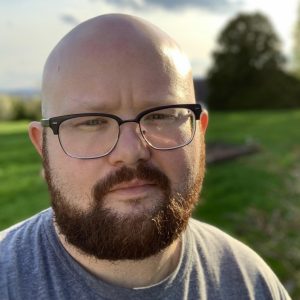Silas Hansen, M.F.A., Waxwing
Silas Hansen, M.F.A., is the nonfiction editor for the literary journal Waxwing. He is also an assistant professor of English and director of creative writing at Ball State University.
 What is your editing process as a nonfiction editor for a literary magazine?
What is your editing process as a nonfiction editor for a literary magazine?
Mostly, I’m picking stuff that I think is really close to done already or that I like as it is. I go back and forth with the writer a little bit and say, ‘I would be happy to publish this as it is, but have you thought about this, this or this?’ I try to make them open-ended questions rather than directing people. I try to keep in mind that as an editor I have to help people make the work more what they want, rather than what I want. I try to balance it in that way.
What do you think makes a good editor?
Being a good editor is seeing the potential in something and seeing what it could be but also understanding what the writer wants it to be. I always tell people they have to be able to read a lot, and to be able to see the strengths and the things that aren’t necessarily written for them. In terms of hard skills, copy editing is a big one. Being able to negotiate what’s a rule versus a guideline and what somebody is doing stylistically versus a mistake—it’s big being able to do that.
What should someone read to become a better editor?
If you’re not a poet, I think reading poetry can make you a really good line editor. It’ll help you figure out how words work and how sentences work and how language works. Even if you’re not going to be writing or editing poetry, reading a lot of poetry is really helpful to having those lines in your head. Reading current issues of literary magazines is really important as well.
WWhat specifically do you like about editing literary nonfiction?
I get a lot of straight memoirs, where it’s just ‘this happened to me’ and that’s the whole story. What I’m usually looking for is something that goes beyond that and says, ‘Here’s what happened to me, but here’s how I’ve made sense of it’ or ‘Here is how it’s made me think about this other thing.’ A lot of it is that opportunity to connect the truth with the larger world, to make sense of the complications of real life. Sometimes people are missing that reflection. They take for granted that everybody’s going to understand why they think the way that they do about a certain topic. Usually, the essayists are really good at the writing part of it and making the sentences work, but I sometimes have to point out to them, ‘I don’t think people are going to necessarily understand why you got from point A to point B.’
What are your thoughts on racial inequalities in editing and publishing?
A big part of it is trying to make sure that in every issue, I am thinking about the makeup of the voices that I’m publishing so that I don’t ever have a situation where every essay I publish is by a white writer, or particularly a white man writer. I try to be really conscious of that. I don’t think there’s an easy answer for why things are the way that they are. It’s partially that editors aren’t doing enough work. I’m trying to reach out to writers of color who I admire and ask them to submit their work in the hopes that if I’m publishing more people of color, then more people of color will feel comfortable submitting to me. I think being aware of your own biases, being aware that there’s not one simplistic answer to things, being aware you need to bring other voices into it — those are all really important things for us to remember as editors.
Waxwing considers submissions of fiction and nonfiction from September through April; poetry in August, September, November, January and March; and translations of the above year-round.
— Giana Longo '22